Pharmacological treatment of pulmonary hypertension Pulmonary Hypertension Pulmonary hypertension (PH) or pulmonary arterial hypertension (PAH) is characterized by elevated pulmonary arterial pressure, which can lead to chronic progressive right heart failure. Pulmonary hypertension is grouped into 5 categories based on etiology, which include primary PAH, and PH due to cardiac disease, lung or hypoxic disease, chronic thromboembolic disease, and multifactorial or unclear etiologies. Pulmonary Hypertension ( PH pH The quantitative measurement of the acidity or basicity of a solution. Acid-Base Balance) (characterized by an elevated pulmonary arterial pressure, which can lead to chronic progressive right heart failure Heart Failure A heterogeneous condition in which the heart is unable to pump out sufficient blood to meet the metabolic need of the body. Heart failure can be caused by structural defects, functional abnormalities (ventricular dysfunction), or a sudden overload beyond its capacity. Chronic heart failure is more common than acute heart failure which results from sudden insult to cardiac function, such as myocardial infarction. Total Anomalous Pulmonary Venous Return (TAPVR)) includes various classes of drugs. These medications fall into the following drug categories: phosphodiesterase type-5 (PDE-5) inhibitors, soluble guanylate cyclase Guanylate cyclase An enzyme that catalyzes the conversion of GTP to 3. Diarrheagenic E. coli (sGC) stimulants Stimulants Stimulants are used by the general public to increase alertness and energy, decrease fatigue, and promote mental focus. Stimulants have medical uses for individuals with ADHD and sleep disorders, and are also used in combination with analgesics in pain management. Stimulants, prostacyclin Prostacyclin A prostaglandin that is a powerful vasodilator and inhibits platelet aggregation. It is biosynthesized enzymatically from prostaglandin endoperoxides in human vascular tissue. The sodium salt has been also used to treat primary pulmonary hypertension. Eicosanoids receptor Receptor Receptors are proteins located either on the surface of or within a cell that can bind to signaling molecules known as ligands (e.g., hormones) and cause some type of response within the cell. Receptors agonists, endothelin receptor Receptor Receptors are proteins located either on the surface of or within a cell that can bind to signaling molecules known as ligands (e.g., hormones) and cause some type of response within the cell. Receptors antagonists, and calcium Calcium A basic element found in nearly all tissues. It is a member of the alkaline earth family of metals with the atomic symbol ca, atomic number 20, and atomic weight 40. Calcium is the most abundant mineral in the body and combines with phosphorus to form calcium phosphate in the bones and teeth. It is essential for the normal functioning of nerves and muscles and plays a role in blood coagulation (as factor IV) and in many enzymatic processes. Electrolytes channel blockers ( CCBs CCBs Calcium channel blockers (CCBS) are a class of medications that inhibit voltage-dependent L-type calcium channels of cardiac and vascular smooth muscle cells. The inhibition of these channels produces vasodilation and myocardial depression. There are 2 major classes of CCBS: dihydropyridines and non-dihydropyridines. Class 4 Antiarrhythmic Drugs (Calcium Channel Blockers)). Via differing pathways, the overall effect of the medications is vascular smooth muscle relaxation and vasodilation resulting in a fall in pulmonary arterial pressure. Contraindications Contraindications A condition or factor associated with a recipient that makes the use of a drug, procedure, or physical agent improper or inadvisable. Contraindications may be absolute (life threatening) or relative (higher risk of complications in which benefits may outweigh risks). Noninvasive Ventilation, adverse events, and drug interactions are dependent on the class of drugs.
Last updated: Mar 6, 2023
Pulmonary hypertension Pulmonary Hypertension Pulmonary hypertension (PH) or pulmonary arterial hypertension (PAH) is characterized by elevated pulmonary arterial pressure, which can lead to chronic progressive right heart failure. Pulmonary hypertension is grouped into 5 categories based on etiology, which include primary PAH, and PH due to cardiac disease, lung or hypoxic disease, chronic thromboembolic disease, and multifactorial or unclear etiologies. Pulmonary Hypertension ( PH pH The quantitative measurement of the acidity or basicity of a solution. Acid-Base Balance) is defined as an elevated pulmonary arterial pressure.
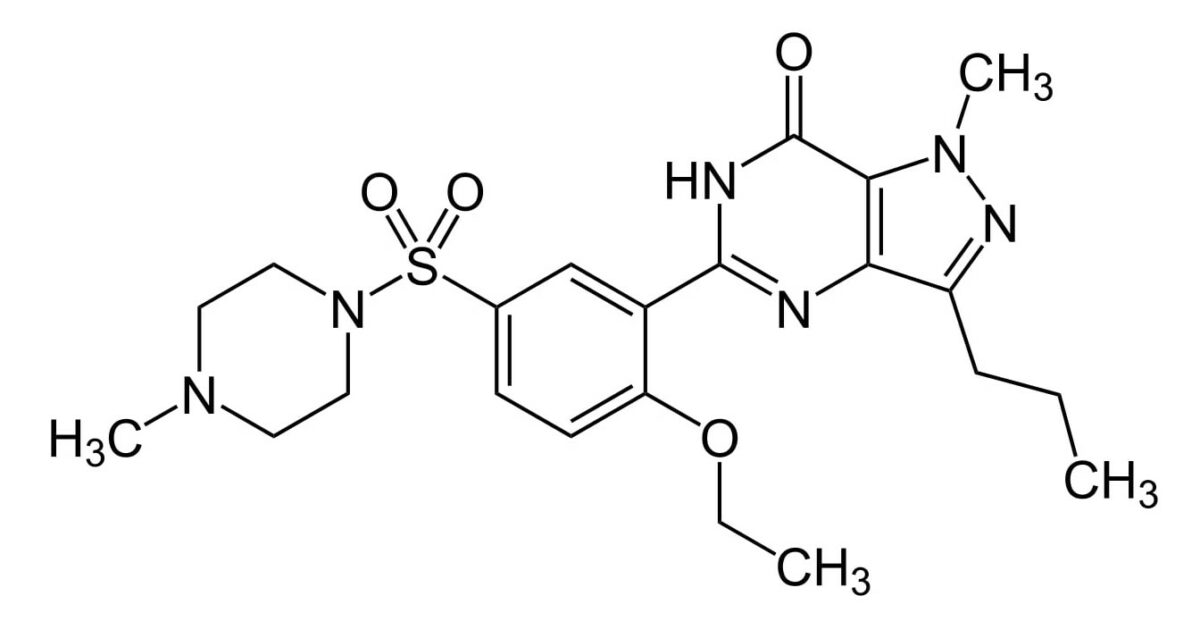
Chemical structure of sildenafil
Image: “Sildenafil” by Yikrazuul. License: Public Domain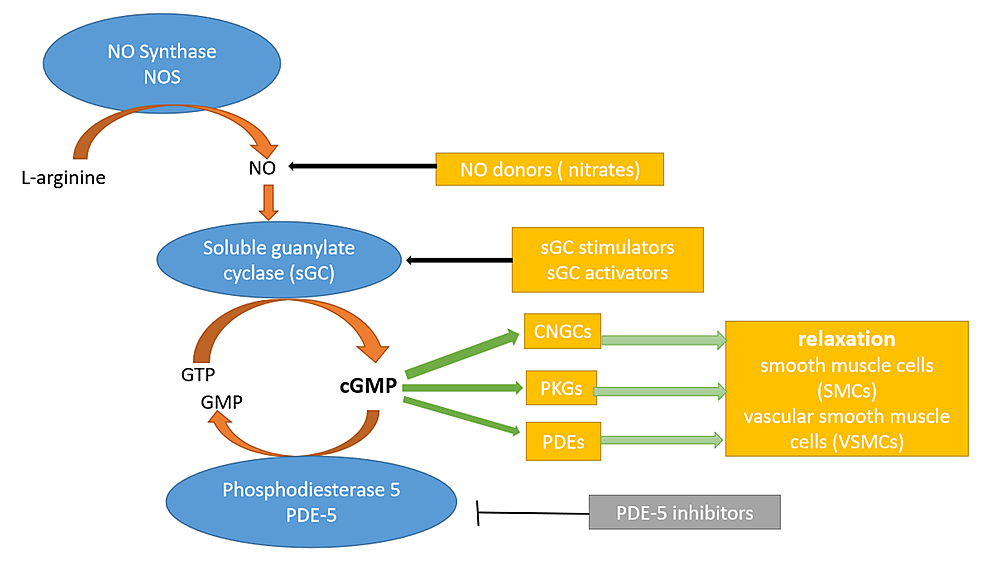
Nitric oxide (NO)–soluble guanylate cyclase (sGC)–cGMP pathway:
Nitric oxide is synthesized in the blood vessels from L-arginine, catalyzed by endothelial NO synthase. Nitric oxide goes to the smooth muscle layer of the vessel and activates sGC by binding its heme group. Soluble guanylate cyclase then converts GTP to cGMP. The downstream effects include vasodilation, inhibition of fibrosis, platelet aggregation, and smooth muscle proliferation. The image indicates areas in the pathway where the medications (PDE-5 inhibitors, sGC stimulators, and nitric oxide) exert their therapeutic mechanisms.
CNGC: cyclic nucleoside gated-ion channel
GMP: guanosine monophosphate
GTP: guanosine triphosphate
NOS: nitric oxide synthase
PDE: phosphodiesterase
PKG: protein kinase G
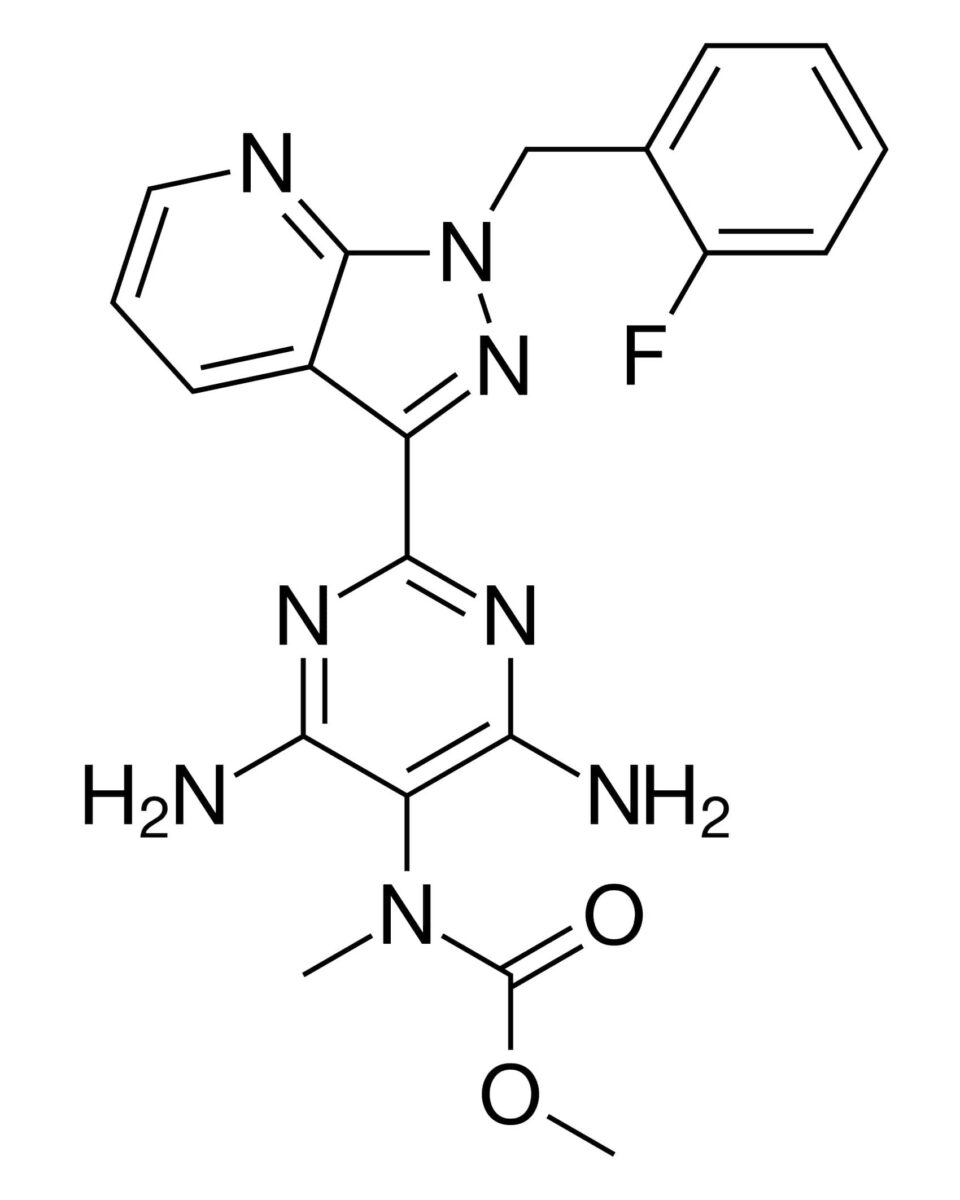
Chemical structure of riociguat
Image: “Riociguat” by Vaccinationist. License: Public Domain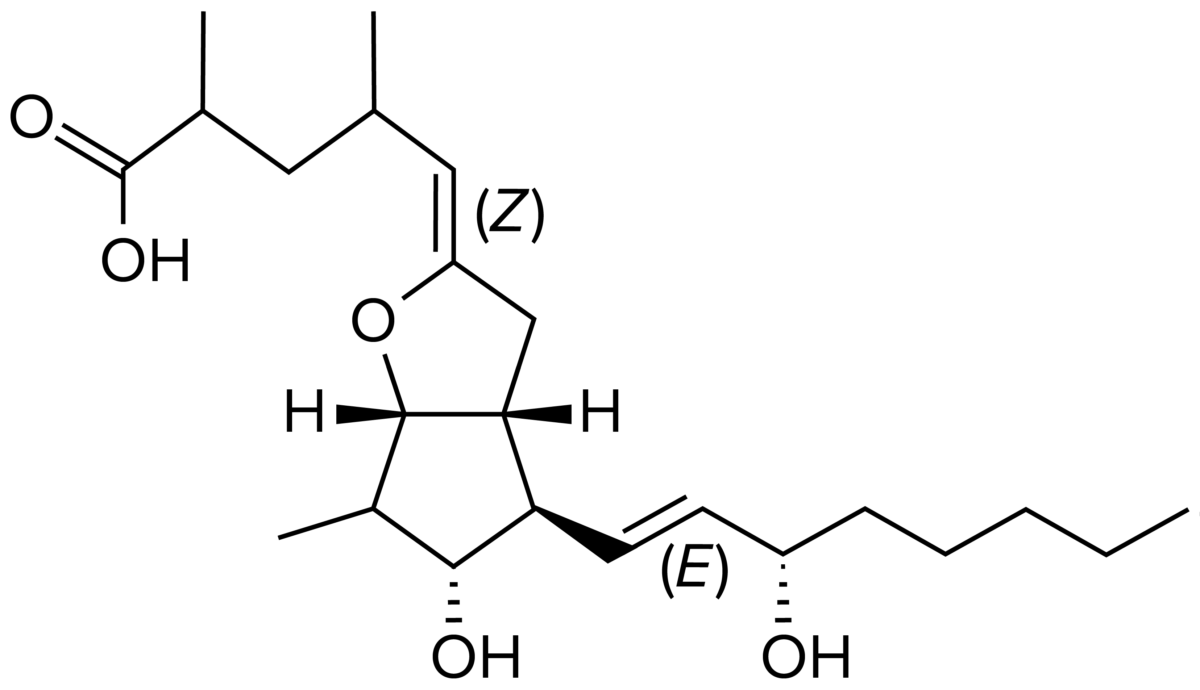
Chemical structure of prostacyclin
Image by Lecturio.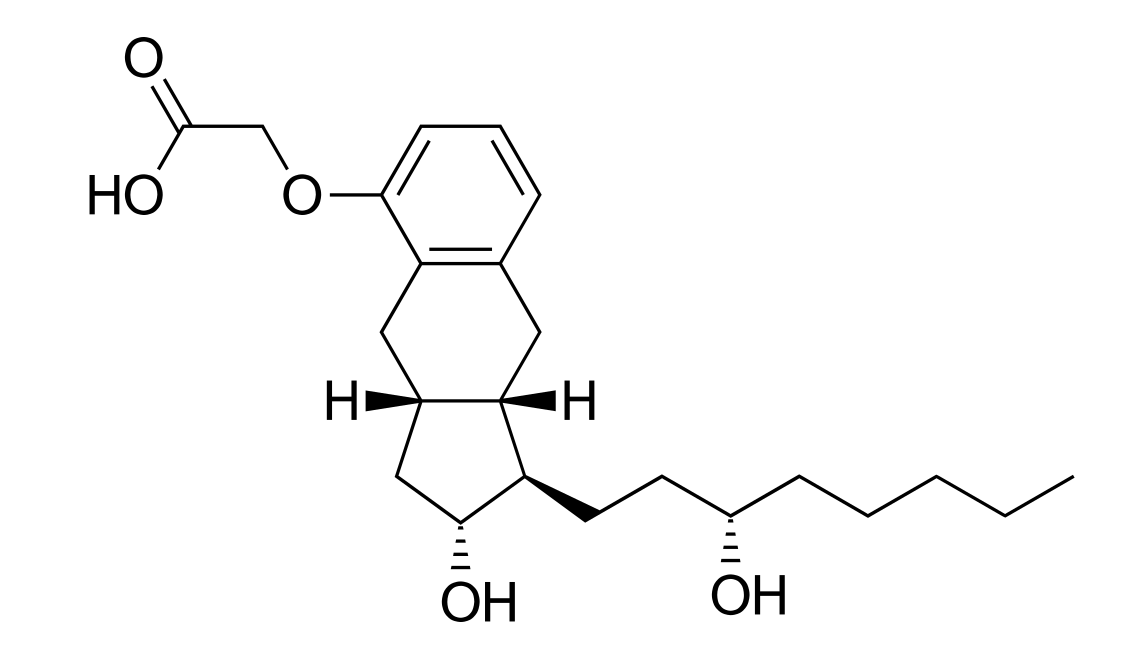
Chemical structure of treprostinil
Image: “Treprostinil” by Fvasconcellos. License: Public Domain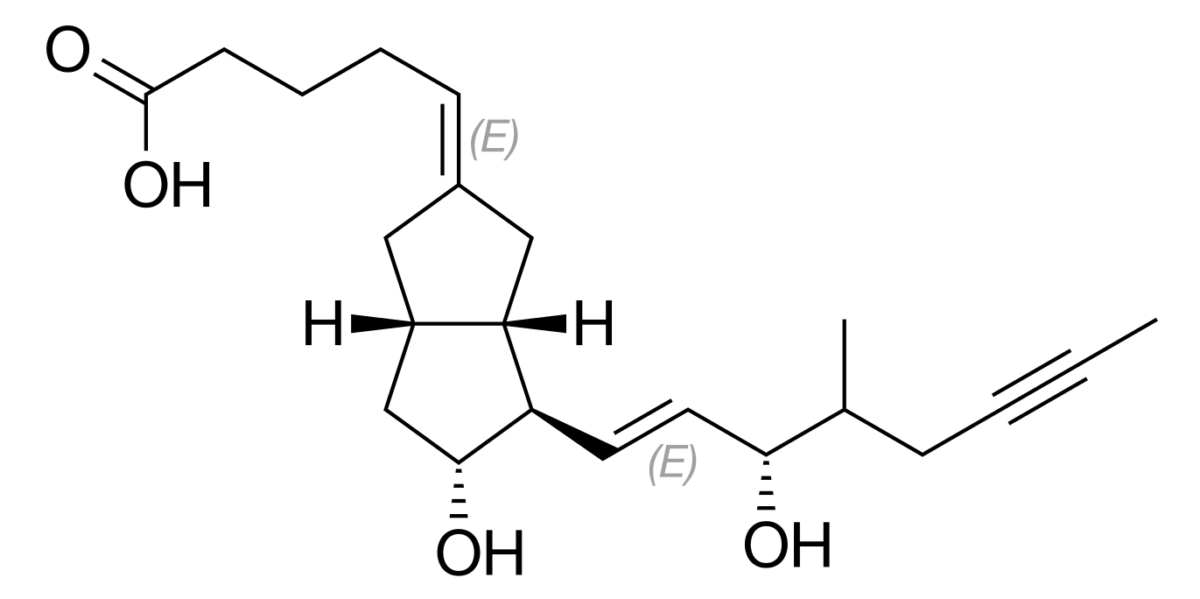
Chemical structure of iloprost
Image: “Iloprost” by Vaccinationist. License: Public Domain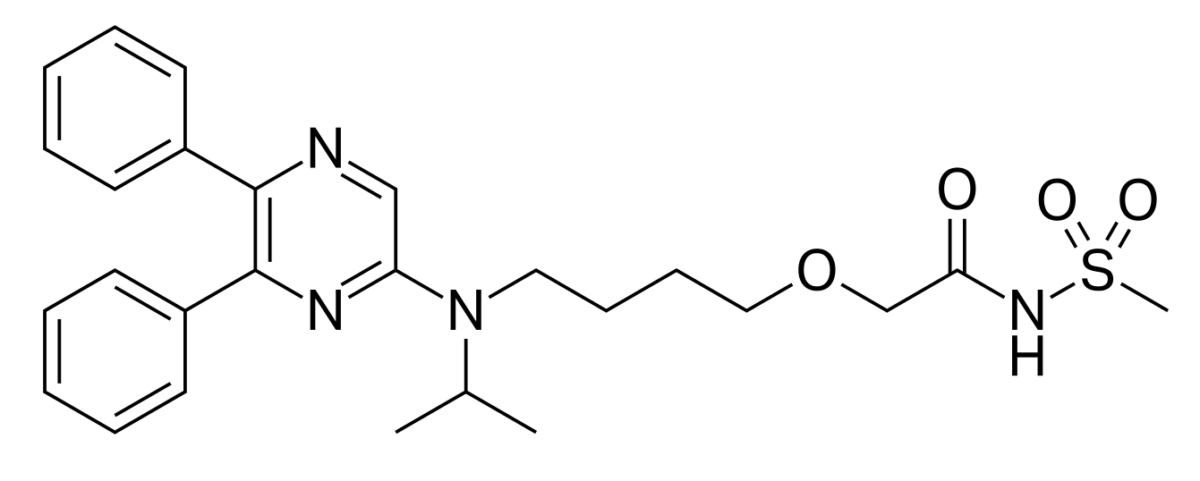
Chemical structure of selexipag
Image: “Selexipag” by Vaccinationist. License: Public Domain| Medications | Pharmacokinetics Pharmacokinetics Pharmacokinetics is the science that analyzes how the human body interacts with a drug. Pharmacokinetics examines how the drug is absorbed, distributed, metabolized, and excreted by the body. Pharmacokinetics and Pharmacodynamics | Indications | Adverse drug effects |
|---|---|---|---|
| Epoprostenol Epoprostenol A prostaglandin that is a powerful vasodilator and inhibits platelet aggregation. It is biosynthesized enzymatically from prostaglandin endoperoxides in human vascular tissue. The sodium salt has been also used to treat primary pulmonary hypertension. Hemostasis |
|
|
|
| Treprostinil |
|
|
|
| Iloprost |
|
|
|
| Selexipag |
|
|
|
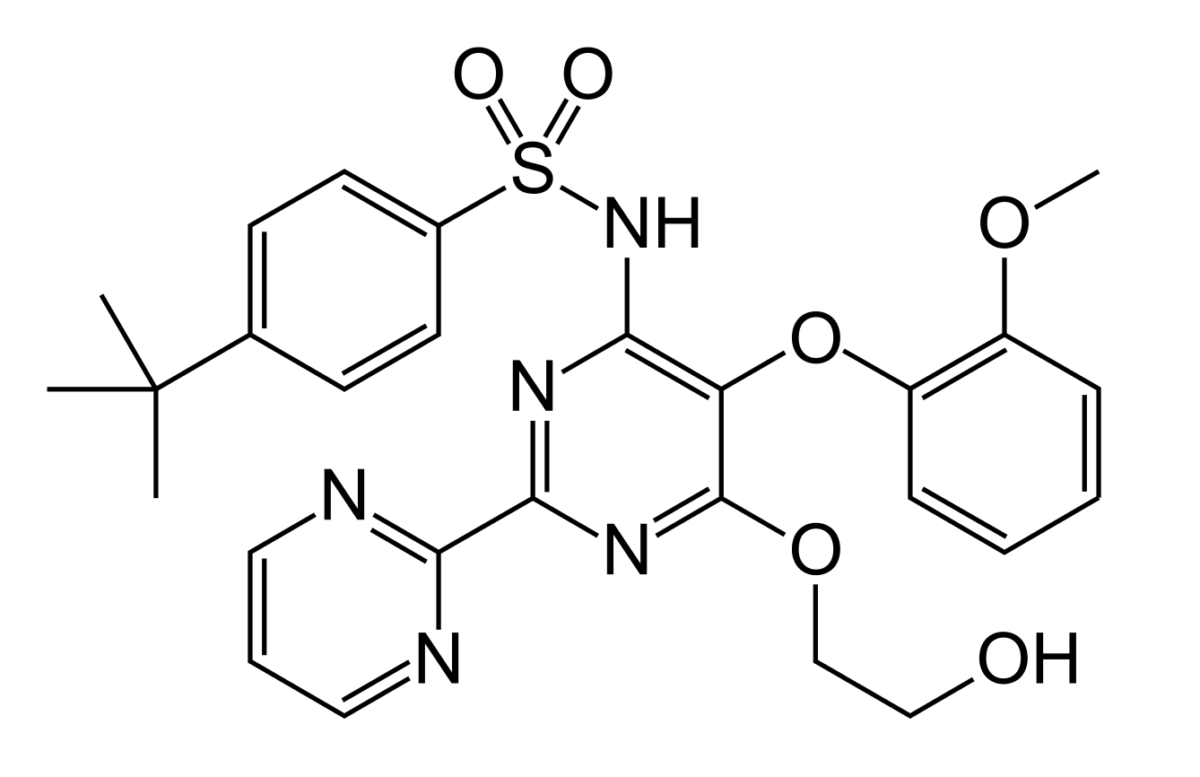
Chemical structure of bosentan
Image: “Bosentan” by Fvasconcellos. License: Public Domain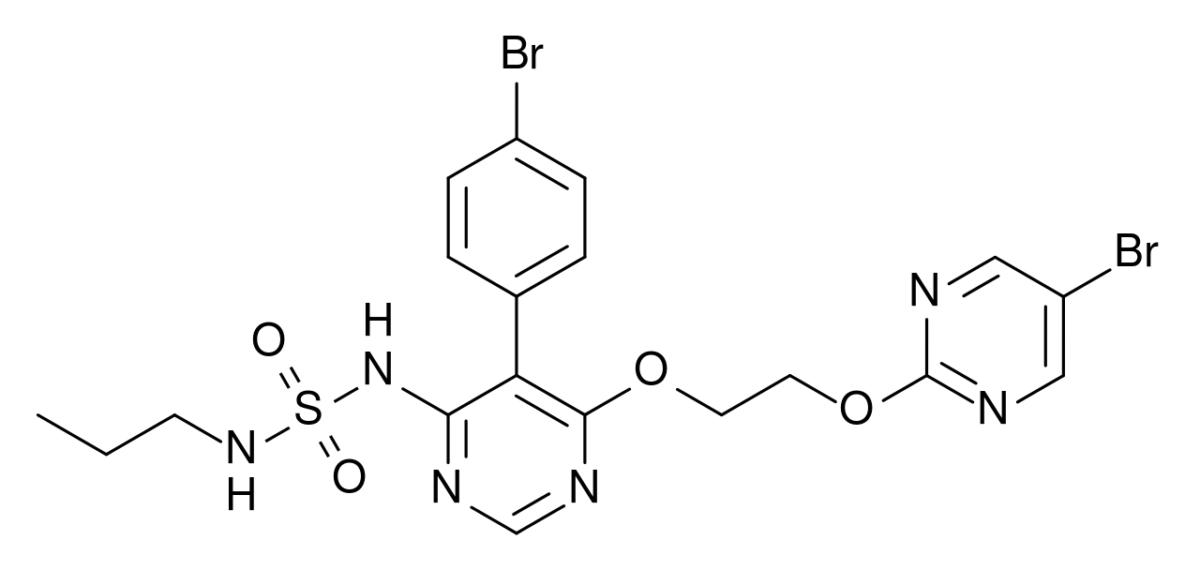
Chemical structure of macitentan
Image: “Macitentan” by Anypodetos. License: Public Domain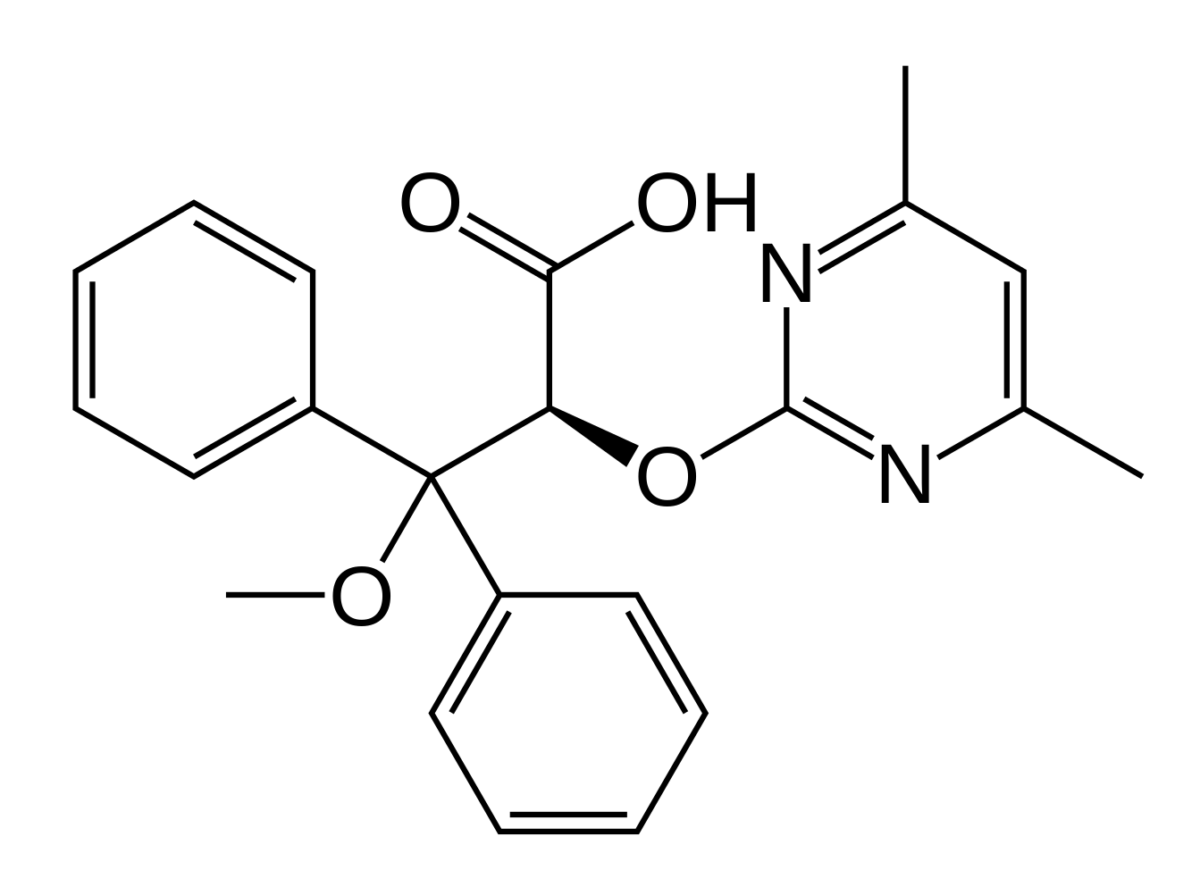
Chemical structure of ambrisentan
Image: “Ambrisentan” by Fvasconcellos. License: Public Domain| Medications | Pharmacokinetics Pharmacokinetics Pharmacokinetics is the science that analyzes how the human body interacts with a drug. Pharmacokinetics examines how the drug is absorbed, distributed, metabolized, and excreted by the body. Pharmacokinetics and Pharmacodynamics | Indications | Adverse drug effects |
|---|---|---|---|
| Bosentan |
|
|
|
| Macitentan |
|
|
|
| Ambrisentan |
|
|
|
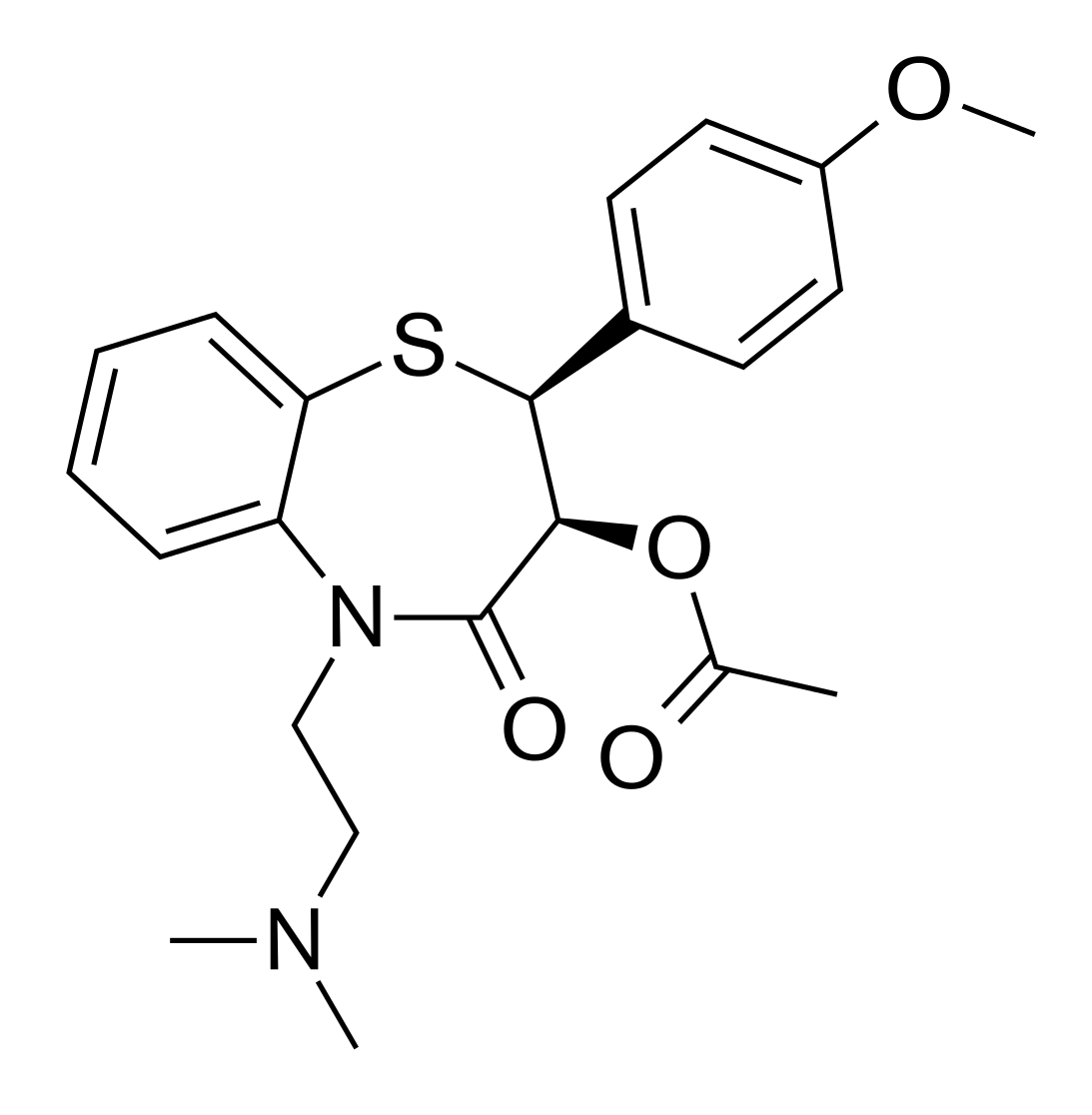
Chemical structure of diltiazem
Image: “2D structure of diltiazem” by Vaccinationist. License: Public Domain
Chemical structure of verapamil
Image: “Skeletal formula of verapamil” by Vaccinationist. License: Public Domain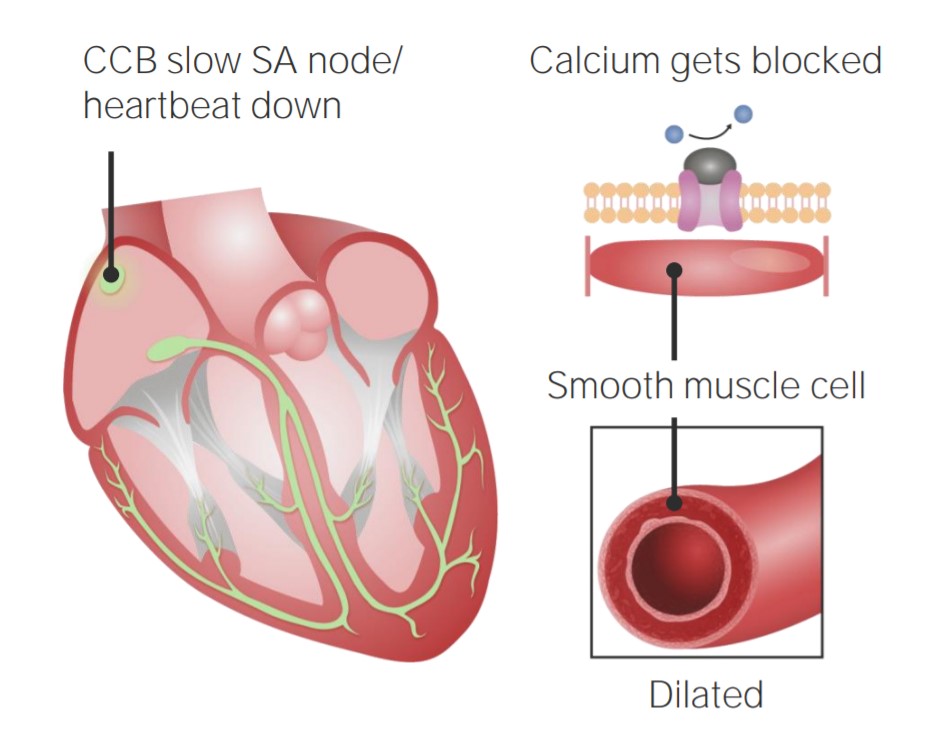
Cardiovascular effects of calcium channel blockers (CCBs):
Calcium channel blockers slow down the sinoatrial (SA) node, causing a lowered heart rate. Calcium channel blocker intake leads to vascular smooth muscle relaxation, causing vasodilation.